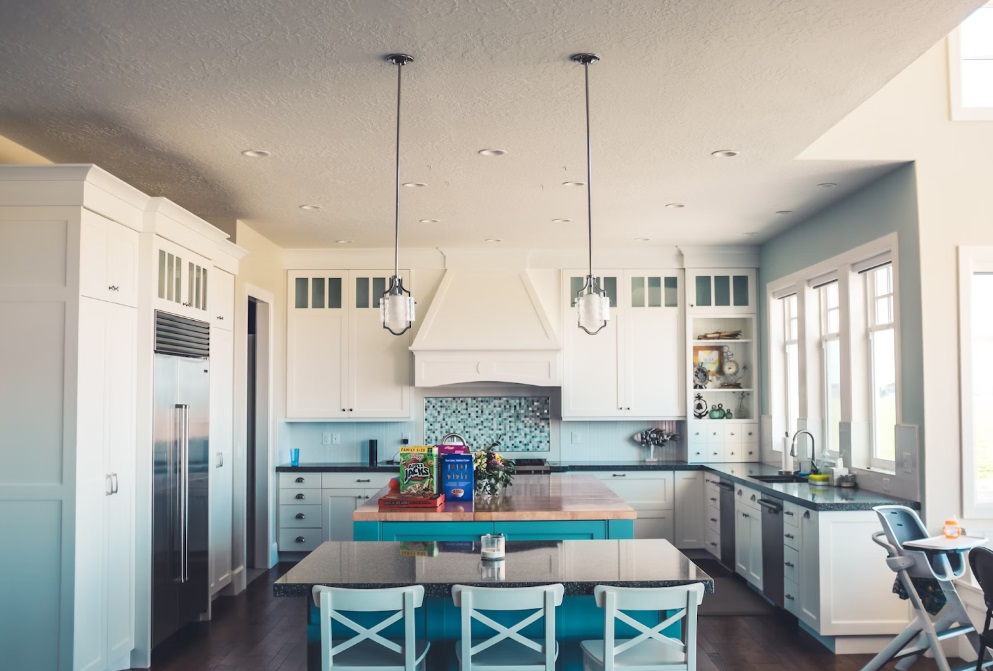In the realm of residential architecture and interior design, few spaces hold as much significance as the kitchen. Long gone are the days when kitchens were merely utilitarian spaces tucked away from the rest of the house. Today, kitchens serve as the heart of the home, functioning not only as places for meal preparation but also as hubs for socializing, entertaining, and family bonding. As such, the design of the kitchen plays a pivotal role in shaping the overall ambiance and functionality of a residence. In this discourse, we delve into the importance of kitchen design in residential projects, exploring the impact of kitchen layouts and kitchen remodeling ideas on the modern living experience.
Creating Functional Kitchen Layouts
A well-designed kitchen layout is fundamental to the efficiency and practicality of the space. Whether it’s a compact apartment kitchen or a sprawling suburban culinary haven, the layout determines how seamlessly tasks can be performed and how smoothly traffic flows within the space. Various kitchen layouts exist, each catering to different needs and spatial constraints.
The Classic Work Triangle
One of the most commonly employed kitchen layouts is the classic work triangle, which emphasizes the efficient arrangement of the three primary work zones: the sink, the refrigerator, and the cooking range. By positioning these elements in a triangular configuration, designers aim to minimize the distance traveled between them, thereby optimizing workflow and reducing fatigue during food preparation.
Open Plan Designs
In recent years, open-plan kitchen layouts have gained immense popularity, especially in contemporary residential projects. These layouts blur the boundaries between the kitchen and adjacent living areas, fostering a sense of connectivity and fluidity within the home. Open-plan designs facilitate interaction between inhabitants and guests, allowing hosts to engage in culinary activities without feeling isolated from the rest of the household.
Island and Peninsula Configurations
Kitchen islands and peninsulas are versatile design elements that not only provide additional countertop space and storage but also serve as focal points around which social interactions can revolve. Whether used for casual dining, meal preparation, or as a gathering spot during parties, these features enhance the functionality and aesthetics of the kitchen, making it a multifunctional space that adapts to various activities and occasions.
Exploring Innovative Kitchen Remodeling Ideas
While traditional kitchen layouts continue to hold sway, the realm of kitchen design is constantly evolving, driven by technological advancements, changing lifestyle preferences, and aesthetic trends. From sleek minimalist aesthetics to rustic farmhouse charm, there’s a myriad of kitchen remodeling ideas to suit every taste and architectural style.
Sustainable Design Practices
In an era marked by growing environmental awareness, sustainable kitchen design has emerged as a prominent trend in residential projects. From energy-efficient appliances and water-saving fixtures to eco-friendly materials and recycling stations, there are numerous ways to reduce the ecological footprint of a kitchen without compromising on style or functionality. Incorporating sustainable design practices not only benefits the environment but also enhances the long-term value and appeal of the residence.
Smart Technology Integration
The rise of smart home technology has revolutionized the way we interact with our living spaces, and the kitchen is no exception. Modern kitchens can now be equipped with a plethora of smart devices and appliances, from Wi-Fi-enabled refrigerators and voice-activated faucets to programmable ovens and intelligent lighting systems. These technological innovations not only streamline everyday tasks but also add a layer of convenience and sophistication to the kitchen environment.
Customized Storage Solutions
Effective storage is crucial for maintaining a clutter-free and organized kitchen. As such, contemporary kitchen remodeling projects often prioritize the integration of customized storage solutions tailored to the specific needs and habits of the inhabitants. From pull-out pantry shelves and concealed cabinets to modular drawer organizers and vertical storage racks, there’s no shortage of innovative ways to maximize storage capacity while optimizing accessibility and ergonomics.
Innovative Material Selections
Choosing the right materials for kitchen surfaces, flooring, and cabinetry is paramount in achieving both aesthetic appeal and practical durability. From timeless classics like granite and marble to contemporary options such as engineered quartz and concrete, the range of materials available allows designers to tailor the kitchen’s look and feel to the desired style and functionality. Moreover, advances in material science have led to the development of innovative options like recycled glass countertops, bamboo flooring, and sustainable wood cabinetry, providing eco-conscious homeowners with stylish yet environmentally responsible choices for their kitchen remodeling projects.
Lighting Design Strategies
Effective lighting design is essential for enhancing the ambiance, functionality, and visual appeal of the kitchen. In addition to providing adequate task lighting for food preparation and cooking, designers must also consider ambient lighting to create a warm and inviting atmosphere, as well as accent lighting to highlight architectural features and focal points. From recessed ceiling lights and pendant fixtures to under-cabinet LEDs and decorative sconces, the strategic placement and selection of lighting fixtures can transform the look and feel of the kitchen, making it a welcoming and comfortable space for everyday use and special occasions alike.
Conclusion
The importance of kitchen design in residential projects cannot be overstated. Beyond its utilitarian function, the kitchen serves as a focal point for social interaction, culinary creativity, and family gatherings. By carefully considering factors such as kitchen layouts and remodeling ideas, designers can create spaces that are not only aesthetically pleasing but also highly functional, reflecting the unique lifestyle and preferences of the inhabitants. Whether it’s a cozy cottage kitchen or a sleek urban loft, the design of the kitchen shapes the way we experience and interact with our living environment, making it an indispensable component of any residential project.


